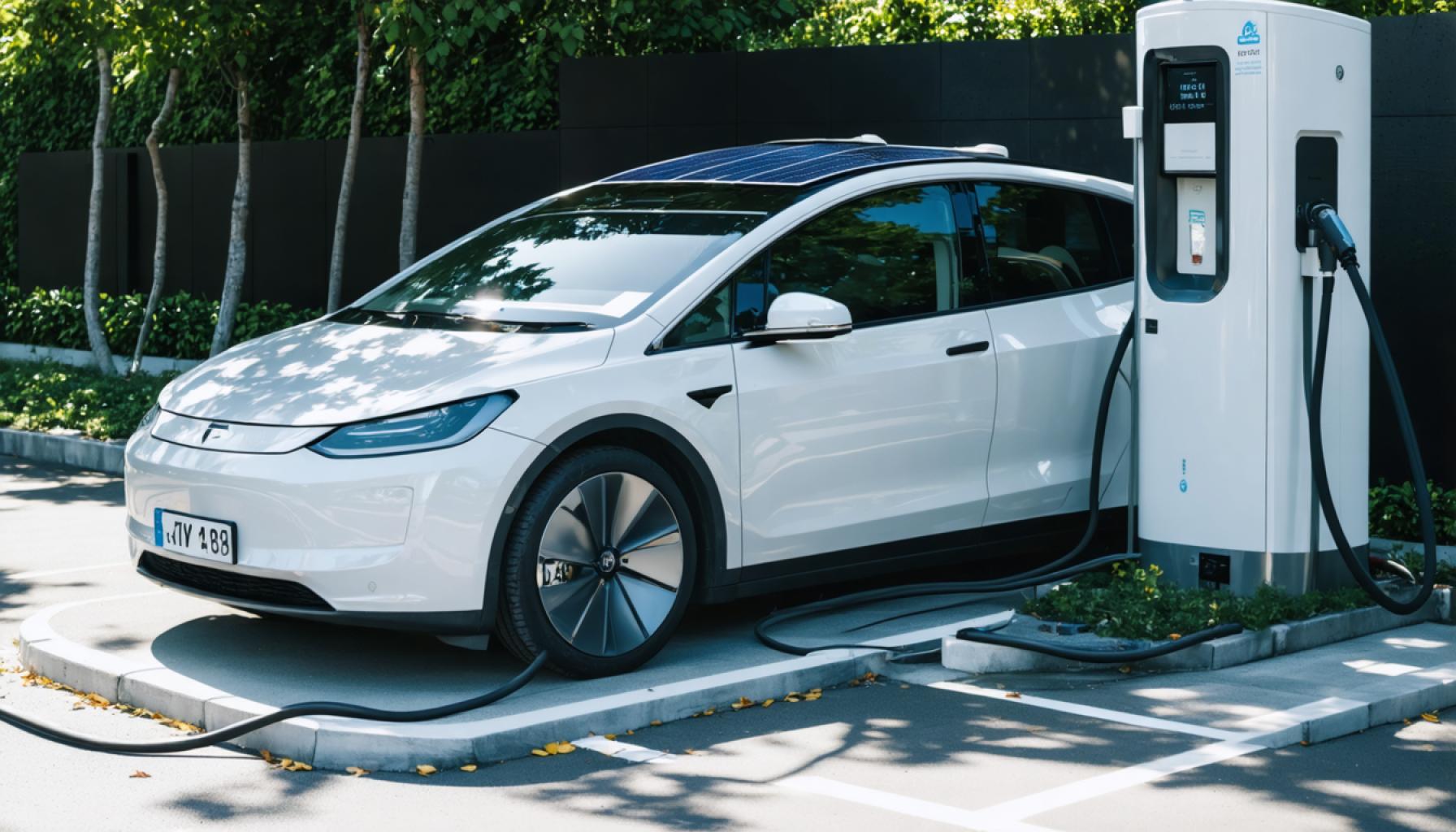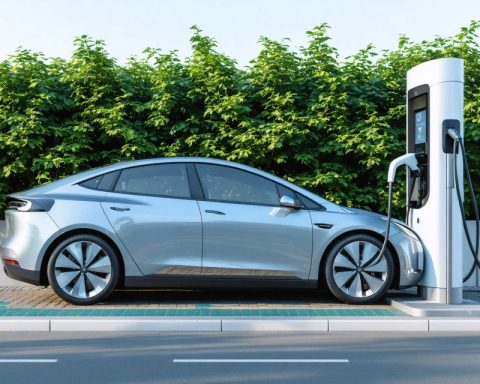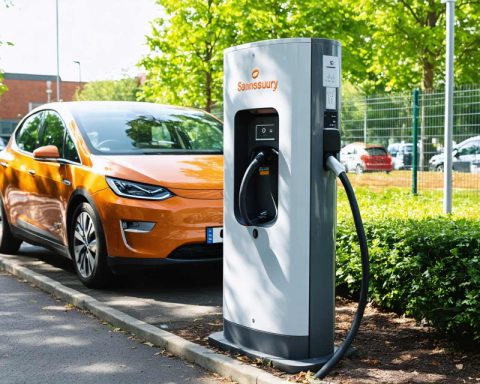- Solar-powered EV charging stations blend innovation and clean energy, offering a sustainable transportation solution.
- These stations reduce reliance on the traditional power grid, lowering carbon footprints and improving accessibility, especially in remote areas.
- Leading regions like California and the Netherlands showcase successful implementation, highlighting technological advancement and creativity.
- Challenges include energy supply consistency during night and cloudy days, requiring battery storage solutions, and the initial infrastructure cost.
- As technology advances and costs decrease, solar charging stations promise a cleaner and more sustainable future.
As the sun dips below the horizon, casting its warm glow across a network of solar panels, a quiet revolution hums beneath the surface. Electric vehicles (EVs), once the wave of the future, now glide silently through our streets, powered by clean energy captured directly from the sky. This seamless blend of technology might just redefine our cities and reshape our relationship with the environment.
Bold innovation meets boundless energy as the potential of solar-powered EV charging stations emerges. Picture expansive parking lots adorned with glistening panels, transforming them into autonomous, eco-friendly powerhouses. Charging infrastructure has often been the Achilles’ heel in the push for widespread EV adoption, but with the integration of solar technology, sustainable solutions leap ahead of yesterday’s challenges.
Efficiency and Accessibility
Solar-powered charging stations not only harness the sun’s abundant energy but also decentralize the charging process, making it more resilient and accessible. By reducing reliance on the traditional power grid, these stations lower carbon footprints and enable the deployment of EV infrastructure in remote or underdeveloped areas. They symbolize a fantastic leap towards making sustainable transportation universally accessible.
Innovation Driving Momentum
Across the world, companies pioneer these systems with passion and precision. California, a vanguard state for renewable energy, sees its highways and cityscapes enhanced by solar innovations. In Europe, efforts in the Netherlands showcase picturesque landscapes dotted with charging hubs that thrive on solar technologies. Such advancements in solar-powered EV charging exemplify not just technological prowess, but humanity’s unwavering creativity in the face of environmental hurdles.
Challenges and Future Outlook
Opacity comes with its fair share of challenges. Nighttime and cloudy days pose potential obstacles, requiring storage solutions like battery systems to ensure a consistent energy supply. Moreover, the initial investment for solar-powered infrastructure can seem staggering. However, as technology advances and costs descend, the benefits outweigh these hurdles.
A Sustainable Tomorrow
Solar-powered EV charging isn’t just a fleeting trend; it’s a testament to human ingenuity charting a sustainable course for future generations. With meticulous planning, strategic partnerships, and earnest governmental support, a cleaner world beckons beyond the horizon, waiting to embrace those willing to take the leap.
Let the future of transportation illuminate with the power of the sun. By reimagining how we fuel our journeys, solar-powered charging not only offers a sustainable solution today but also promises a brighter, greener tomorrow. This is more than progress; it’s a revolution in the making.
Unleashing the Power of the Sun: How Solar-Powered EV Charging Stations Transform the Future
Exploring Additional Facts on Solar-Powered EV Charging Stations
The rise of electric vehicles (EVs) powered by solar energy represents a significant leap towards a sustainable future. However, there’s much more to explore about this transformative technology beyond the initial adoption phase. Let’s delve deeper into various facets that could shape the solar-powered EV landscape.
How Solar-Powered EV Charging Works
Solar-powered EV charging stations work by converting sunlight into electricity using photovoltaic (PV) panels. This electricity is then used to charge electric vehicles. During peak sunlight hours, solar panels can generate more energy than needed. This excess energy can be stored in batteries or fed back into the grid for later use.
Real-World Use Cases
Several countries and companies are already harnessing this technology:
1. Tesla’s Supercharger Network: Tesla continuously expands its solar-powered charging network, aiming for self-reliant stations equipped with solar arrays and Powerwall storage.
2. Netherlands Initiatives: The Netherlands leads with solar-powered carports that provide both shelter and charging capabilities at the same time.
3. Germany’s Solar Autobahn: In Germany, sections of the autobahn are being fitted with solar panels specifically to support charging infrastructure for EVs.
Market Forecast & Industry Trends
The global market for solar-powered charging stations is expected to experience significant growth over the next decade. According to a report by Allied Market Research, the solar-powered EV charging market is expected to reach $184 billion by 2030, driven by technological advancements and favorable government policies.
Controversies & Limitations
While the benefits are substantial, challenges persist:
– Intermittency Issue: Solar power relies on sunlight, which means availability can be inconsistent due to weather conditions or geographical constraints. Battery storage is a necessary solution but can be costly.
– High Initial Costs: The upfront investment for setting up solar-powered stations can be high. However, it is important to consider the long-term savings on electricity costs and reduced environmental impact.
Energy Storage Solutions
Advanced battery systems like lithium-ion and emerging solid-state batteries play a crucial role in storing solar-generated power. Integrating these allows charging stations to provide power even during low sunlight periods.
Security & Sustainability
Solar-powered EV charging systems support energy independence and grid resilience. By utilizing local energy production, they reduce dependency on large centralized power plants, enhancing energy security and sustainability.
Actionable Recommendations
– Consider Solar EV Charging For Businesses: If you own a business with significant parking facilities, investing in solar-powered charging stations can reduce long-term energy costs and enhance your sustainability profile.
– Advocate for Local Incentives: Check for government incentives aimed at promoting renewable energy infrastructure in your area. These can substantially offset the initial investment.
– Stay Informed about Technological Advances: Staying updated with new advancements in battery technology can help in making informed decisions regarding solar energy use and storage.
Conclusion
Solar-powered EV charging stations bridge the gap between sustainable energy and futuristic transportation. By leveraging the sun’s power, we can reduce our reliance on fossil fuels and pave the way for a cleaner, greener tomorrow. As technology and infrastructure advance, the dream of a world running on renewable energy inches closer to reality.
For more insights into sustainable energy advancements, visit the International Energy Agency.
Embrace this revolution and join the movement towards an eco-friendly future today.


















